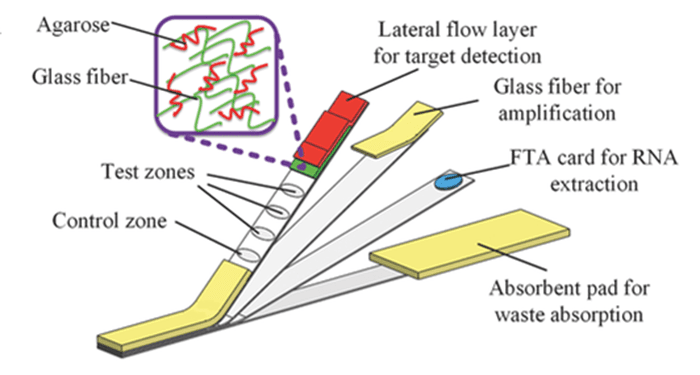Dengue is a mosquito-borne viral infection with mild to life-threatening manifestations. Given the rapid increase in the incidence of infections and the lack of specific treatments, early detection is of tremendous importance for disease prognosis and monitoring. Although paper-based devices, such as lateral flow test strips, have proved to be simple and affordable tools in point-of-care diagnosis, their application suffers from low sensitivity and functionality.

The paper-polymer hybrid material fabricated by two collaborating groups from Xi’an Jiaotong University, China and University of Malaya, Malaysia offers a solution to these limitations. Professor Feng Xu, Professor Belinda Pingguan-Murphy and co-workers have created a lateral flow assay combining the benefits of both paper and a polymer substrate, agarose, in a hybrid material.
They have created multiple test zones that generate correlating signals with the viral RNA for semi-quantification of the virus concentration in the sample. Additionally, incorporation of the polymer led to better control of the fluid flow and optimal biomolecule interaction, achieving a ten-fold increase in detection sensitivity, which is comparable or superior to what has been described so far. The authors successfully applied their prototype on clinical blood samples, demonstrating the promise their strategy holds for the sensitive detection of not only dengue virus but also many types of targets for diverse future applications.

















